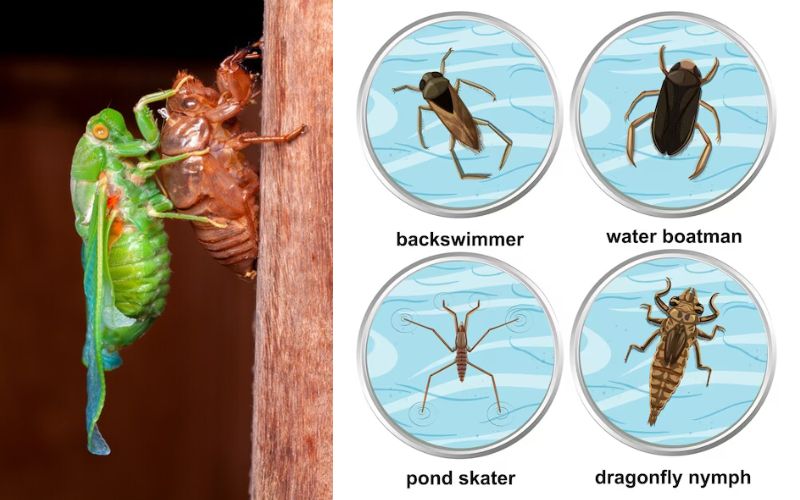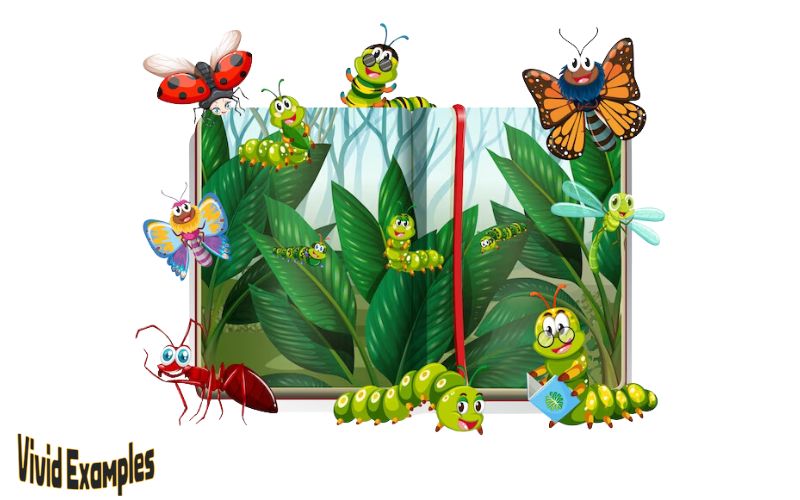Examples of Insectivorous Animals include anteater, bat, dragonfly, echidna, Aardwolf, Frog, Kookaburra, Lizard, etc
Insectivorous animals are a fascinating group of creatures that primarily feed on insects as a primary source of nutrition. These animals play a vital role in maintaining the balance of ecosystems by controlling insect populations. In this blog post, we will explore the world of insectivorous animals, understand their characteristics, and appreciate their importance in the natural world.
Understanding Insectivorous Animals
Insectivorous animals are characterized by their diet, which mainly consists of insects. While some animals are exclusively insectivorous, others may have a mixed diet, incorporating insects as a significant portion of their food intake. The adaptations these animals possess, such as specialized teeth, claws, or beaks, are geared towards capturing and consuming insects efficiently.
Examples of Insectivorous Animals
- Anteater: Known for their long snouts and tongues, anteaters consume ants and termites.
- Aardwolf: Despite being a member of the hyena family, aardwolves primarily eat termites.
- Bat (Insectivorous): Many bat species are insectivores, feeding on a variety of insects.
- Bee-eater: As their name suggests, these birds are known for catching and eating bees and wasps.
- Chameleon: These reptiles consume a diet largely made up of insects.
- Dragonfly: Dragonflies are predators that eat mosquitoes, flies, and other small insects.
- Echidna: Also known as spiny anteaters, echidnas eat ants and termites.
- Frog: Many frog species are insectivores, feeding on insects and other small animals.
- Gecko: Geckos are primarily insectivorous, eating a variety of insects.
- Hedgehog: Hedgehogs are known for their insectivorous diet, which includes beetles, caterpillars, and earthworms.
- Iguana: While some iguanas are herbivores, others eat insects.
- Jumping Spider: These spiders are active hunters and feed primarily on insects.
- Kookaburra: Known for their distinctive call, kookaburras eat insects, as well as small rodents and reptiles.
- Lizard: Many lizards are insectivores, including geckos and chameleons.
- Mole: Moles are insectivores, feeding primarily on earthworms and other small invertebrates.
- Nuthatch: These small birds eat insects and seeds.
- Oriole: Orioles are known to eat insects, fruit, and nectar.
- Pangolin: Pangolins are unique mammals that eat ants and termites.
- Quokka: While they are primarily herbivorous, quokkas have been known to eat insects.
- Raccoon: Raccoons are omnivores, but they do eat insects as part of their diet.
- Shrew: Shrews are small mammals that eat insects and other invertebrates.
- Toad: Toads are amphibians that eat a variety of insects.
- Uromastyx: These lizards are primarily herbivorous, but they do eat insects.
- Venus Flytrap: This plant is one of the few insectivorous plants in the world.
- Woodpecker: Woodpeckers eat insects found in the bark of trees.
- Xenops: These birds eat insects and spiders.
- Yellowhammer: These birds eat insects, especially during the breeding season.
- Zebra Finch: While they primarily eat seeds, zebra finches also eat insects.
- Armadillo: Armadillos are insectivores that eat a variety of insects and invertebrates.
- Butterfly (Caterpillar stage): During their caterpillar stage, many butterflies are insectivores.
Remember, these animals play a crucial role in controlling insect populations and maintaining the balance of our ecosystems. 🌍
The Role of Insectivorous Animals in the Ecosystem

Insectivorous animals, with their specialized diets focused on consuming insects, play a pivotal role in maintaining the delicate balance of ecosystems. Their contributions extend across various aspects of ecological health and sustainability.
1. Natural Pest Control:
Insectivorous animals act as natural pest controllers by preying on insects that can become agricultural or forestry pests. Bats, birds, and certain mammals help keep insect populations in check, preventing infestations that could damage crops and other vegetation.
2. Biodiversity Regulation:
By controlling insect populations, these animals indirectly regulate the competition between different species. This regulation contributes to biodiversity maintenance, ensuring that no single insect species dominates an ecosystem to the detriment of others.
3. Nutrient Cycling:
As insectivores consume insects, they release nutrients back into the ecosystem through their waste. This process enhances nutrient cycling, benefiting plant growth and overall ecosystem health. In essence, insectivorous animals contribute to the recycling of essential elements within the ecosystem.
4. Pollination Assistance:
While not all insectivorous animals directly participate in pollination, some, like certain bat species and birds, inadvertently aid in the process. By consuming insects that might otherwise harm flowering plants, they indirectly support the reproduction and genetic diversity of plant species.
5. Population Dynamics:
Insectivorous animals, as predators, play a crucial role in regulating the populations of their prey. This dynamic interaction is essential for preventing unchecked population growth of insects, which could lead to ecological imbalances and cascading effects throughout the food chain.
6. Adaptation and Evolution:
The constant interaction between insectivorous animals and their prey has led to fascinating adaptations and evolutionary traits. Over time, both predators and prey have developed strategies to outsmart each other, contributing to the overall biodiversity and evolutionary tapestry of ecosystems.
7. Disease Control:
Some insects act as vectors for diseases harmful to humans and other animals. Insectivorous animals, by controlling insect populations, indirectly help in managing the spread of diseases carried by these vectors, contributing to public and animal health.
Insectivorous animals, with their specialized adaptations and dietary preferences, are essential contributors to the delicate balance of ecosystems. As we explore and appreciate the diverse examples of insectivorous animals, it becomes evident that their role in pest control and nutrient cycling is invaluable. Let us recognize and respect the significance of these creatures in maintaining the harmony of our natural world.

